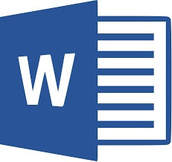It makes sense to produce these projects collaboratively, but it’s logistically challenging. Like so much in work (and life), careful, advanced planning and open, formalized communication offer the cure to almost any collaboration ailment.
Here are the most important things to consider:
1. Designate a project manager. Maybe you’ve already got a dedicated project manager—lucky you! If not, consider who’s likely to be the de facto project manager, and formalize that role. Contributors will bring different levels of commitment (ahem) to a project, and having one person whose focus is to see it all the way through (and who’s charged with the authority to do so) is crucial.
2. Clarify the division of labor. Now that you’ve got a project manager, make sure other collaborators’ tasks are clearly delineated. Organizational structure will determine some, but not all, roles. Other factors to consider include team members’ facility with writing and their availability at key points in the project. Crystal clarity regarding project-specific roles makes it easier for colleagues to get on board, and to execute what’s expected.
3. Make sure the project goals and timeline are clear from the start. This big-picture plan—the macro-view to complement the micro-view of individual roles—is crucial to ensure that collaborators understand the importance of their (timely) contributions. No one wants to be the wrench in the delicately balanced project machinery on which their colleagues depend. Determine the optimal workflow for your project, and make sure that it’s communicated to everyone involved.
4. Make use of technology. Start with your project timeline: there are many tools available to help you create the sort of detailed timeline you need to track tasks, milestones, and project dependencies. And when it comes to creating and polishing content, determine how to best harness your organization’s file sharing or collaboration tools—or which to introduce—and get your team on board with using them.
5. Use an editors’ trick of the trade and create a style sheet for all of your collaborators to follow. If your organization already has one, all the better! This upfront time investment will ultimately—and exponentially—simplify the process of collating individually authored sections. Once the your content is complete, consider designating the most experienced writer (who may or may not be the project manager) as the document’s ultimate editor—or, better yet, hire an expert who can suss out inconsistencies and correlate usage, house style, organization, and more.





